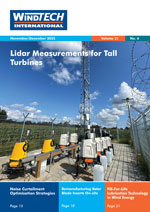The Federal Association of Offshore Wind Energy (BWO), the German Association of Energy and Water Industries (BDEW), VDMA Power Systems, and transmission system operators TenneT, Amprion, and 50Hertz have jointly called for reforms to the policy framework governing offshore wind energy. In a joint industry statement, the organisations outline measures to enable successful offshore wind auctions.
The associations propose postponing the next offshore wind auction round, currently planned for summer 2026, to the fourth quarter of that year. This delay would allow the government to introduce a revised auction design featuring two-sided Contracts for Difference (CfDs), which could significantly reduce capital and generation costs for offshore wind projects.
The proposal by BWO, BDEW, VDMA, and the grid operators to postpone the auction round until late 2026 is intended to pave the way for wider reforms. These include adopting CfDs as a central financing mechanism, complemented by long-term power purchase agreements. The associations stress that the success of CfDs depends on the combined implementation of all measures outlined in the declaration, creating a predictable and attractive environment for offshore wind investment.
The offshore wind sector also aims to improve planning and utilisation of maritime areas to increase generation and make grid infrastructure more efficient. The focus should shift from installed capacity to actual electricity output. Lower turbine density and closer coordination between wind farm and grid planning are expected to raise efficiency while reducing costs and risks for both households and industry.
In addition to auction rescheduling, auction design reform, and spatial planning improvements, the organisations propose immediate measures to secure offshore wind development in 2026. These include extending operating permits for new offshore wind farms to 35 years and introducing a tiered penalty system for delays in commissioning.
According to the associations, these measures would enable longer refinancing periods, lower generation costs, and provide greater planning certainty for investors.










